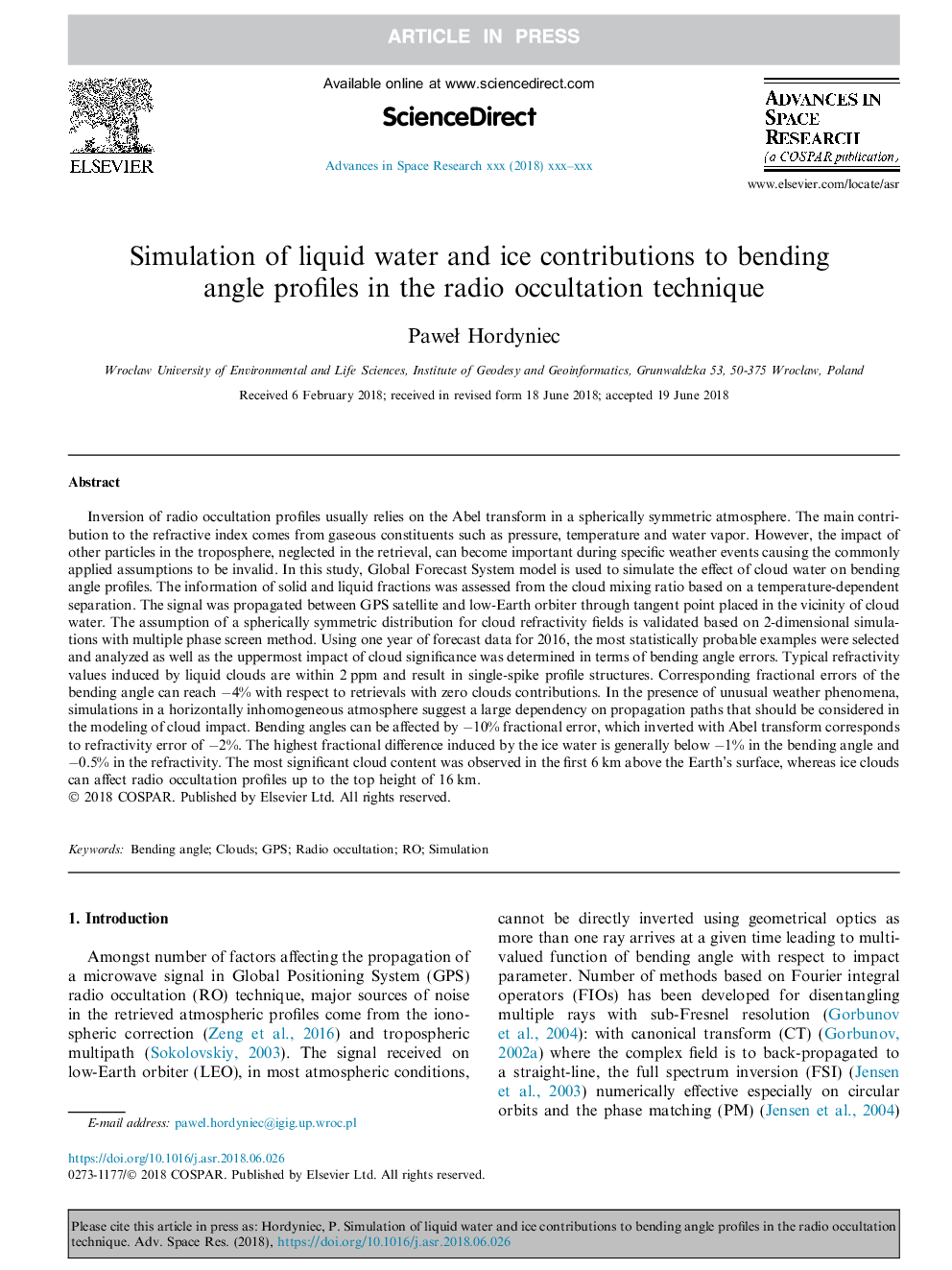| کد مقاله | کد نشریه | سال انتشار | مقاله انگلیسی | نسخه تمام متن |
|---|---|---|---|---|
| 8131652 | 1523262 | 2018 | 15 صفحه PDF | دانلود رایگان |
عنوان انگلیسی مقاله ISI
Simulation of liquid water and ice contributions to bending angle profiles in the radio occultation technique
ترجمه فارسی عنوان
شبیه سازی مشاغل مایع آب و یخ به پروفیل های زاویه خمشی در تکنیک انفجار رادیویی
دانلود مقاله + سفارش ترجمه
دانلود مقاله ISI انگلیسی
رایگان برای ایرانیان
کلمات کلیدی
موضوعات مرتبط
مهندسی و علوم پایه
علوم زمین و سیارات
علوم فضا و نجوم
چکیده انگلیسی
Inversion of radio occultation profiles usually relies on the Abel transform in a spherically symmetric atmosphere. The main contribution to the refractive index comes from gaseous constituents such as pressure, temperature and water vapor. However, the impact of other particles in the troposphere, neglected in the retrieval, can become important during specific weather events causing the commonly applied assumptions to be invalid. In this study, Global Forecast System model is used to simulate the effect of cloud water on bending angle profiles. The information of solid and liquid fractions was assessed from the cloud mixing ratio based on a temperature-dependent separation. The signal was propagated between GPS satellite and low-Earth orbiter through tangent point placed in the vicinity of cloud water. The assumption of a spherically symmetric distribution for cloud refractivity fields is validated based on 2-dimensional simulations with multiple phase screen method. Using one year of forecast data for 2016, the most statistically probable examples were selected and analyzed as well as the uppermost impact of cloud significance was determined in terms of bending angle errors. Typical refractivity values induced by liquid clouds are within 2â¯ppm and result in single-spike profile structures. Corresponding fractional errors of the bending angle can reach â4% with respect to retrievals with zero clouds contributions. In the presence of unusual weather phenomena, simulations in a horizontally inhomogeneous atmosphere suggest a large dependency on propagation paths that should be considered in the modeling of cloud impact. Bending angles can be affected by â10% fractional error, which inverted with Abel transform corresponds to refractivity error of â2%. The highest fractional difference induced by the ice water is generally below â1% in the bending angle and â0.5% in the refractivity. The most significant cloud content was observed in the first 6â¯km above the Earth's surface, whereas ice clouds can affect radio occultation profiles up to the top height of 16â¯km.
ناشر
Database: Elsevier - ScienceDirect (ساینس دایرکت)
Journal: Advances in Space Research - Volume 62, Issue 5, 1 September 2018, Pages 1075-1089
Journal: Advances in Space Research - Volume 62, Issue 5, 1 September 2018, Pages 1075-1089
نویسندگان
PaweÅ Hordyniec,
